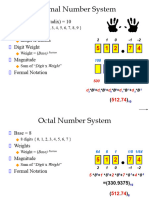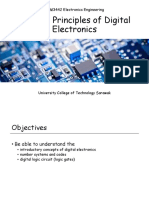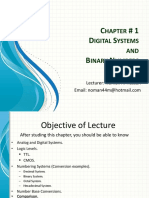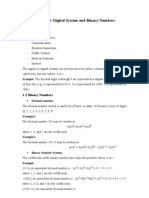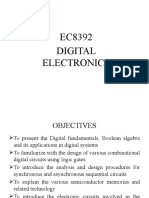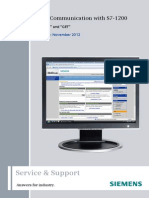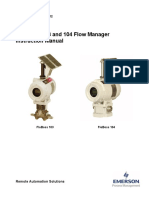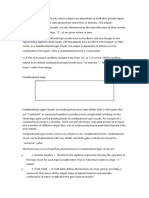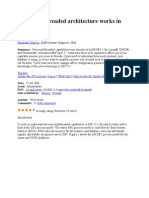0% found this document useful (0 votes)
21 views55 pagesChapter 1 Digital Systems and Binary Numbers
The document outlines the course EEE-2213 Digital Electronics I, covering topics such as digital logic circuits, Boolean algebra, combinational and sequential circuit design, and programmable logic devices. It includes details on number systems, conversions, and various digital applications. The course emphasizes practical applications in digital systems and provides foundational knowledge necessary for further studies in electronics.
Uploaded by
tahsin.tarif.personalCopyright
© © All Rights Reserved
We take content rights seriously. If you suspect this is your content, claim it here.
Available Formats
Download as PDF, TXT or read online on Scribd
0% found this document useful (0 votes)
21 views55 pagesChapter 1 Digital Systems and Binary Numbers
The document outlines the course EEE-2213 Digital Electronics I, covering topics such as digital logic circuits, Boolean algebra, combinational and sequential circuit design, and programmable logic devices. It includes details on number systems, conversions, and various digital applications. The course emphasizes practical applications in digital systems and provides foundational knowledge necessary for further studies in electronics.
Uploaded by
tahsin.tarif.personalCopyright
© © All Rights Reserved
We take content rights seriously. If you suspect this is your content, claim it here.
Available Formats
Download as PDF, TXT or read online on Scribd
/ 55
















